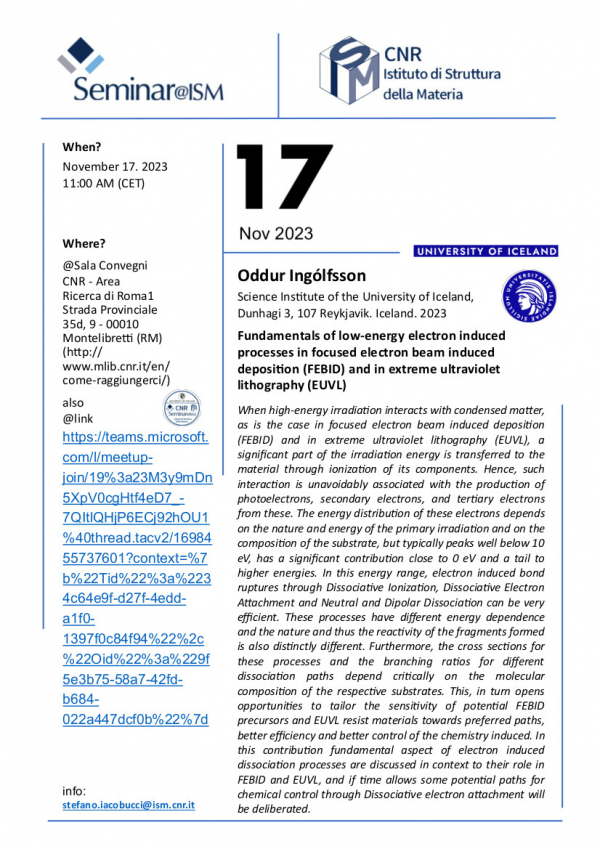When high-energy irradiation interacts with condensed matter, as is the case in focused electron beam induced deposition and in extreme ultraviolet lithography a significant part of the irradiation energy is transferred to the material through ionization of its components. Such interaction is unavoidably associated with production of photoelectrons, secondary electrons, and tertiary electrons. Their energy distribution depends on the nature and energy of the primary irradiation and on the composition of the substrate, but typically peaks well below 10 eV, has a significant contribution close to 0 eV and a tail to higher energies. In this energy range, electron induced bond ruptures through Dissociative Ionization, Dissociative Electron Attachment and Neutral and Dipolar Dissociation can be very efficient. These processes have different energy dependence and the nature and thus the reactivity of the fragments formed is also distinctly different. Furthermore, the cross sections for these processes and the branching ratios for different dissociation paths depend critically on the molecular composition of the respective substrates. This, in turn opens opportunities to tailor the sensitivity of potential FEBID precursors and EUVL resist materials towards preferred paths, better efficiency and better control of the chemistry induced.
Monday, 13 November 2023 14:14
Professor Ingólfsson's Seminar: Fundamentals of Low-Energy Electron-Induced Processes in Focused Electron Beam-Induced Deposition (FEBID) and Extreme Ultraviolet Lithography (EUVL)
17th November, 11:00am (CET) - CNR Sala Convegni - Area di Ricerca di Roma1- Montelibretti (RM) - also - https://tinyl.io/9hEF
Oddur Ingólfsson from the Science Institute of the University of Iceland will present a discussion on fundamental aspects of electron-induced dissociative processes, focusing on their role in Focused Electron Beam-Induced Deposition (FEBID) and Extreme Ultraviolet Lithography (EUVD). Insights will be provided on chemically controlling these processes through dissociative electron bonding, aiming to tailor the sensitivity of FEBID precursor potentials and EUVD resist materials to preferential pathways, optimizing their efficiency and induced chemistry control.
Published in
Various


 English (UK)
English (UK)  Italiano (Italia)
Italiano (Italia)